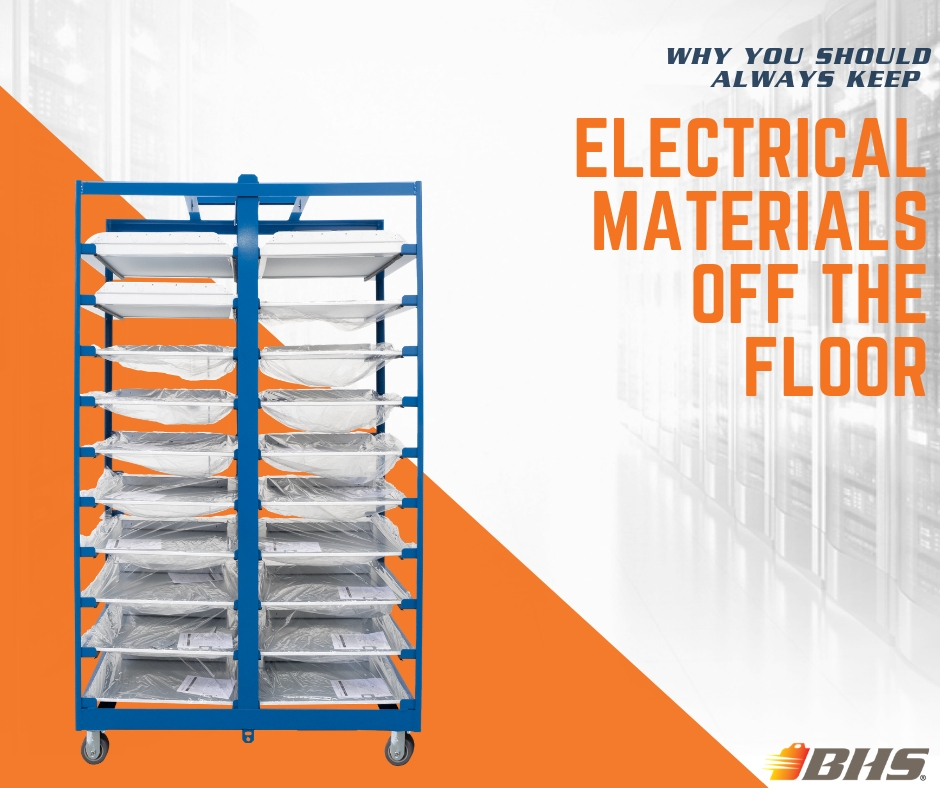We use cookies to make your experience better. To comply with the new e-Privacy directive, we need to ask for your consent to set the cookies. Learn more.
Why You Should Always Keep Electrical Materials Off the Floor

During the course of a long, complex electrical installation, the fastest, easiest way to store tools and building materials is to pile them up on the floor. It may be messy, but you can’t argue with the efficiency...or can you?
In fact, stacks of conduit, connectors, circuit breakers, light fixtures, and other electrical products may do more harm than you realize. Piles slash efficiency. They may even injure workers. So before you load in materials and tools for your next job, consider the following negative effects of storing these items at ground level — along with a few solutions that beat ground storage every time:
-
All that bending to pick up items adds up to lost efficiency.
Bending down to grab a tool or a piece of conduit only takes a few seconds, but those seconds add up. The IEC (Independent Electrical Contractors) crunched the numbers in a recent Risk Control Bulletin (no longer available for download as of 4/16/2021).
-
Piles necessarily add extra retrieval time.
Electrical Material Carts provide another strong advantage over unorganized floor piles — they move with the work. A single Light Fixture Cart stores and elevates up to 48 commercial light fixtures, allowing the installation team to quickly access a new fixture at each install point.
-
Bending and lifting are strong risk factors for the development of musculoskeletal disorders.
Storing materials on the floor is also a workplace health issue. The Occupational Safety and Health Administration lists lifting and bending as risk factors that raise the chances of an employee developing a musculoskeletal disorder, including muscle strains and debilitating back pain. Multiple risk factors compound the hazard.
-
Stacks of materials can present tripping hazards and block means of egress.
The OSHA regulations that cover the construction industry require exits and passageways to “be continually maintained free of all obstructions or impediments to full instant use in the case of fire or other emergency.” Piles of materials can violate this standard. Keeping items off the floor can also prevent injuries associated with tripping and falling in the workplace.
According to this data, electrical employees bend around 100 times a day. Given 250 work days per year, that’s an annual 25,000 bends per employee. At two or three seconds per bend, that adds up to 21 hours per year, per employee. Say you have 50 employees in your crew. You’re losing more than 1,000 hours per year, which is more than 130 eight-hour work days.
All that time could be reclaimed with a small fleet of Electrical Material Carts and other storage solutions designed for the electrical industry.
Compare that to sending an employee halfway across the facility just to grab a new fixture, and the productivity gains become clear.
As of 2013, OSHA says, musculoskeletal disorders made up a third of all injury and illness cases in the workplace. By removing risk factors, every employer can reduce the risk, leading to significant savings in sick time and workers’ compensation costs.
Ironically, we tend to pile our materials on the floor in the interest of efficiency. It seems faster than pre-loading carts and elevated storage units. In the end, though, a little bit of preparation — and the right selection of Electrical Material Carts — will make the job quicker, easier, and, most importantly, safer.
References:
“29 CFR 1926.34: Means of egress.” OSHA. Occupational Safety and Health Administration, U.S. Department of Labor, 30 Jun. 1993. Web. 13 Jun. 2019.
“Ergonomics.” OSHA. Occupational Safety and Health Administration, U.S. Department of Labor, n.d. Web. 13 Jun. 2019.
“Risk Control Bulletin - Getting Material Off The Floor — It’s an Efficiency Issue.” IECI. Independent Electrical Contractors, 2016. PDF. 13 Jun. 2019.
